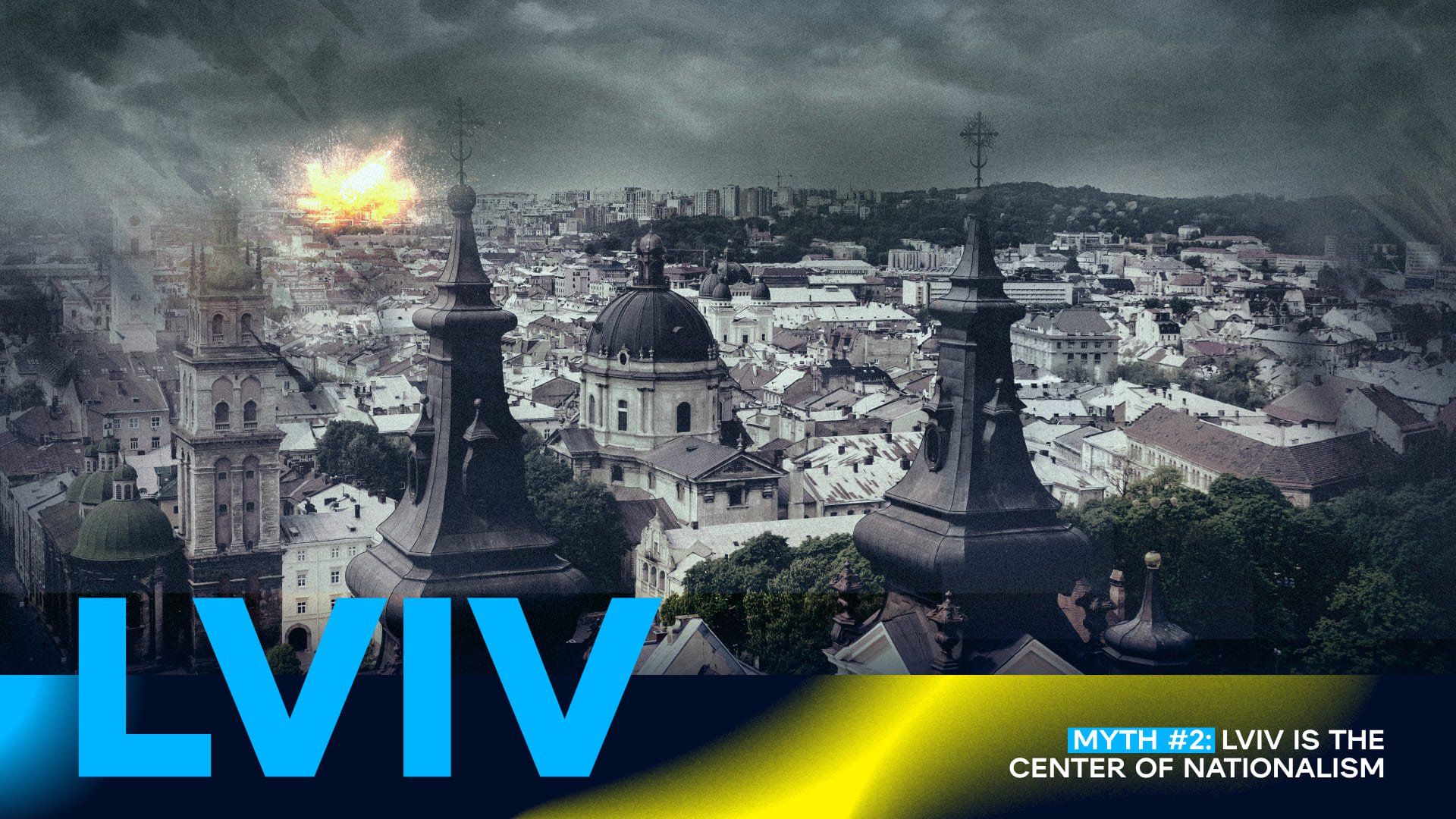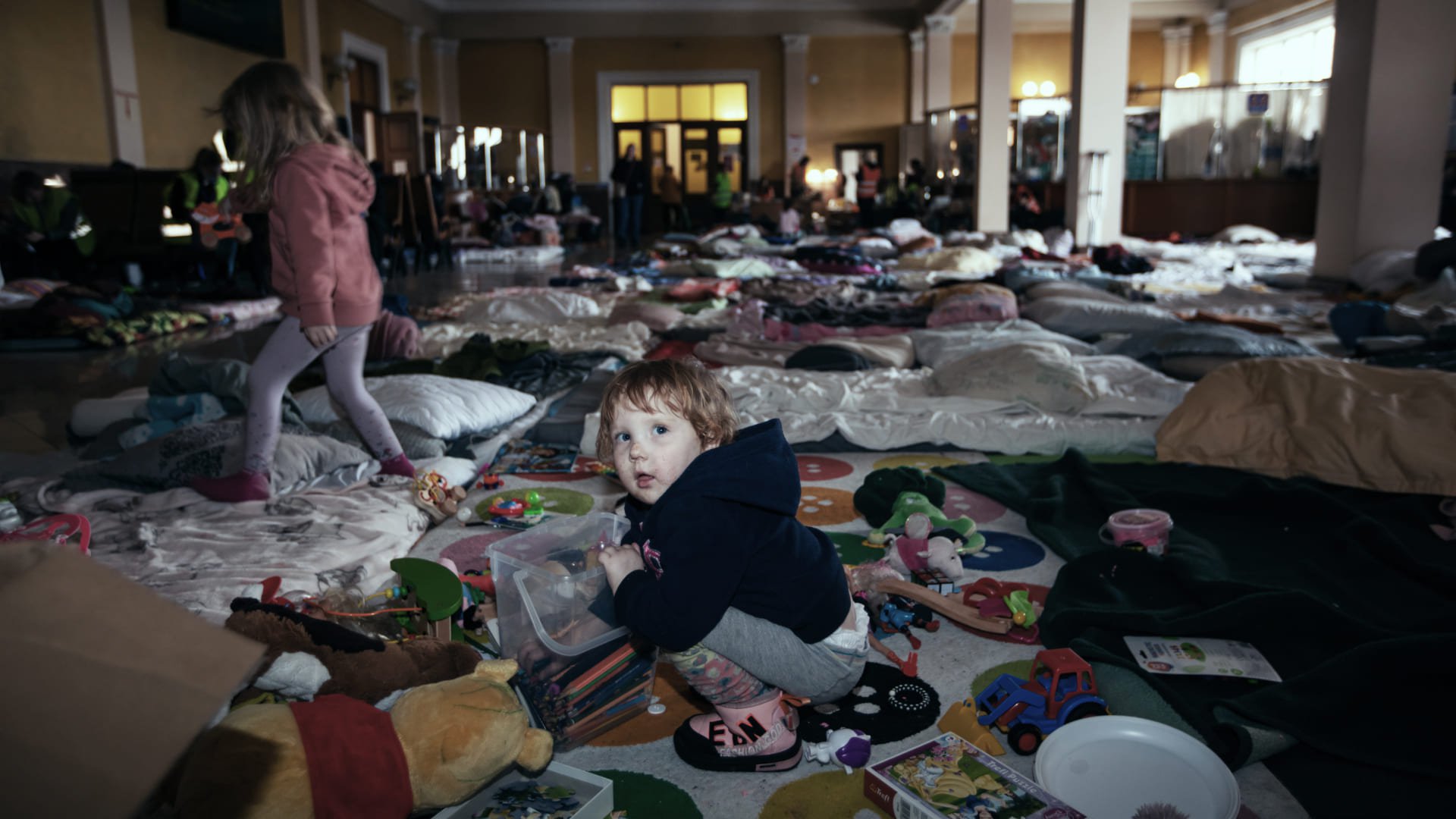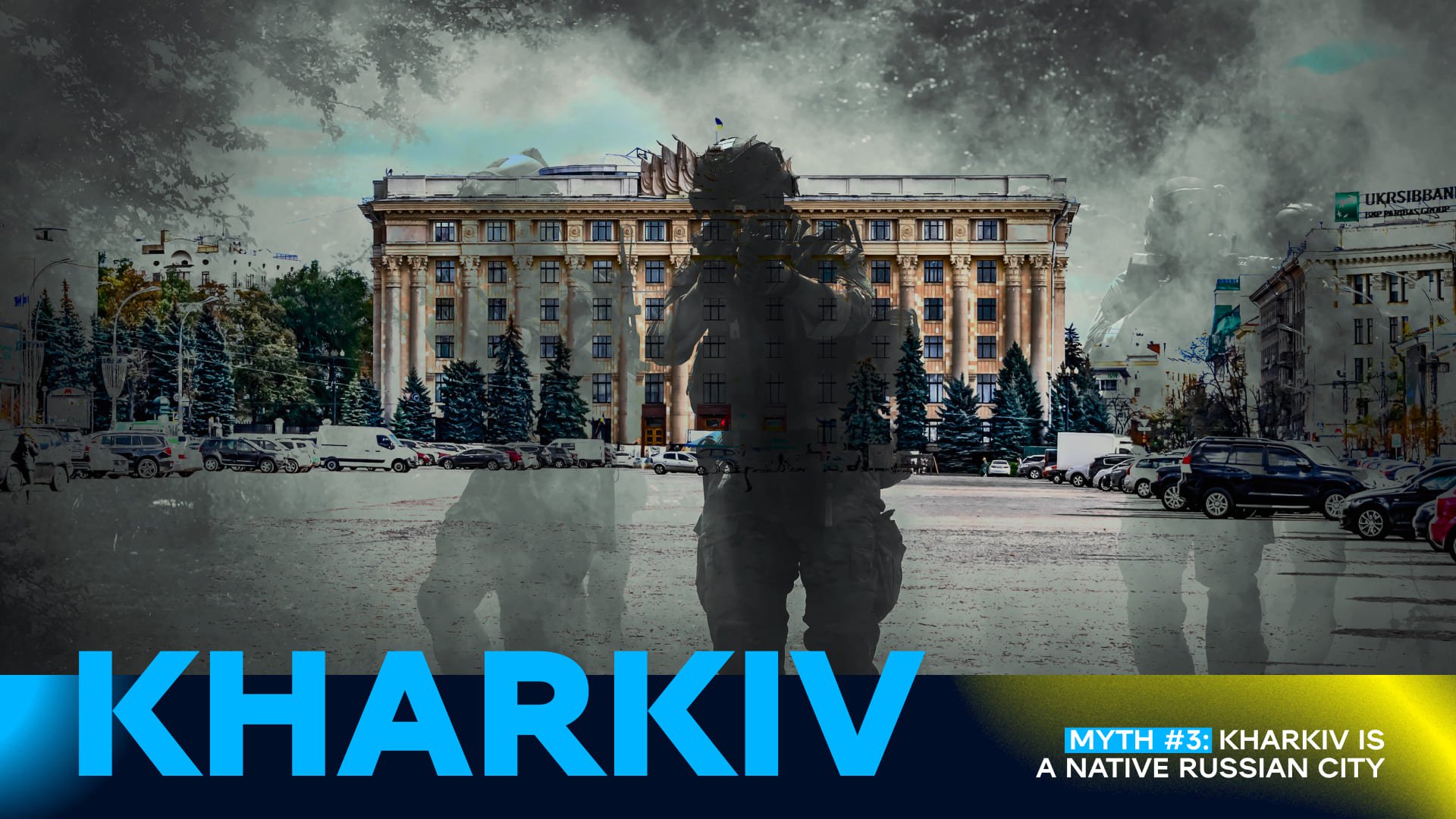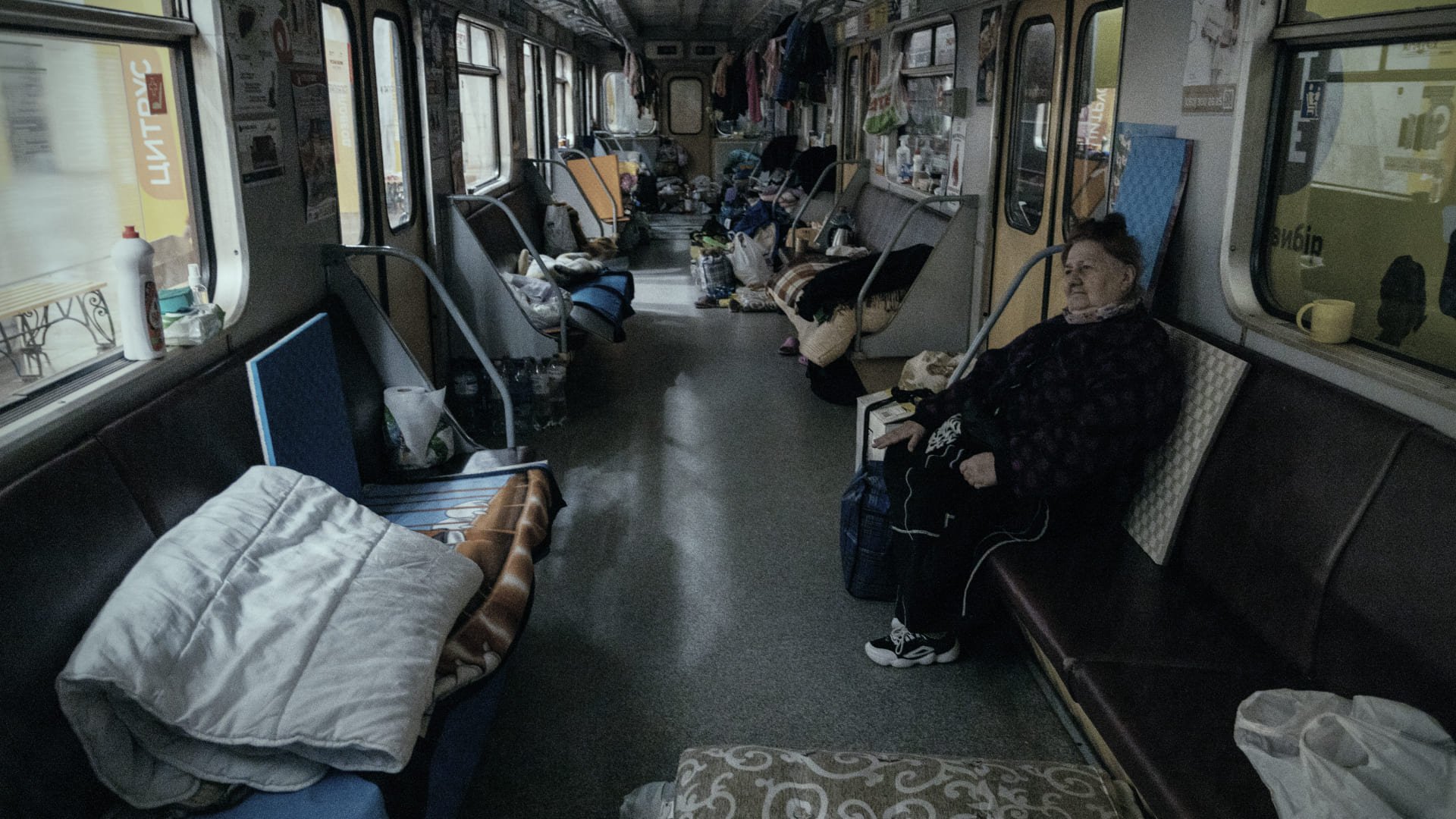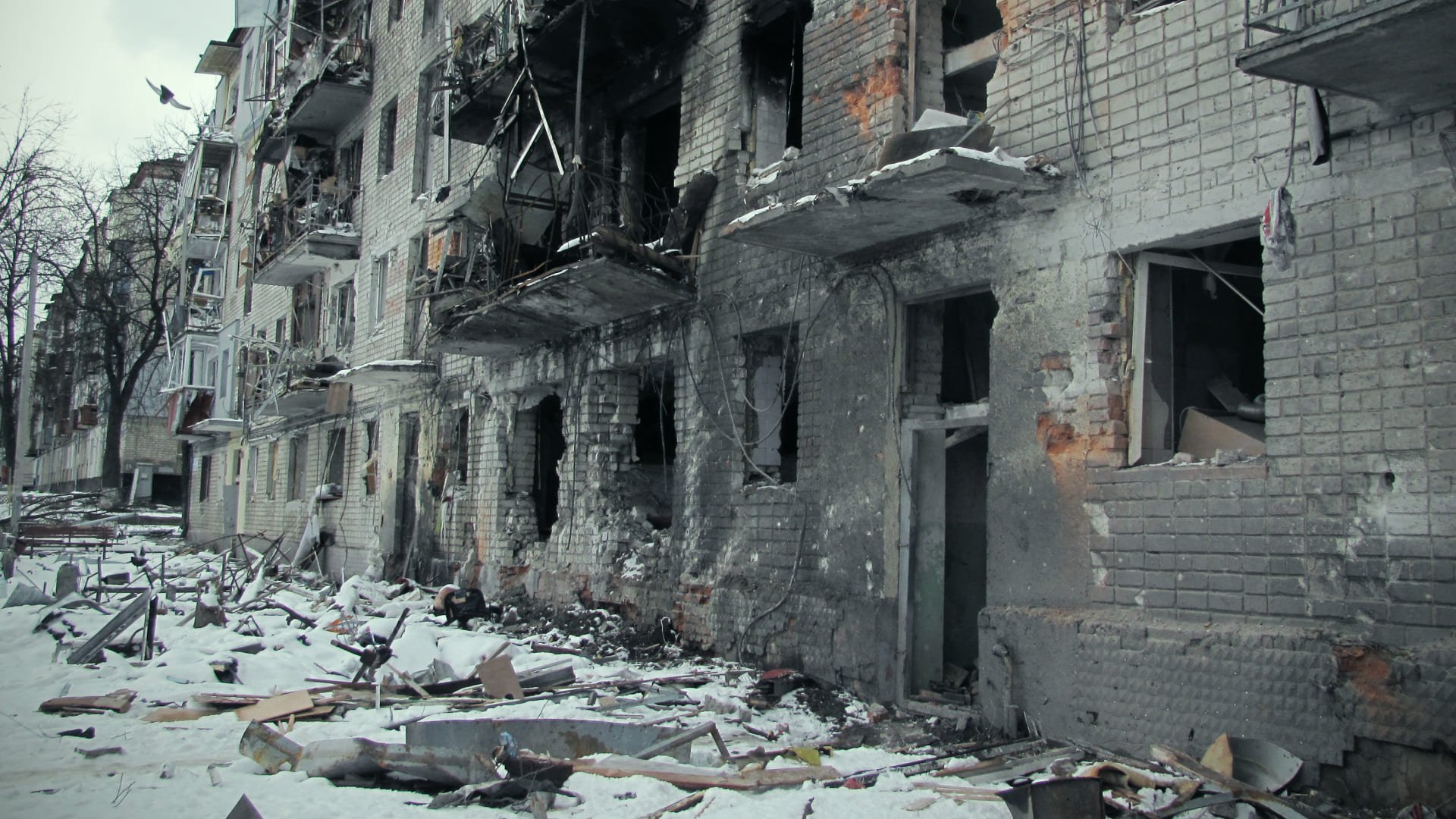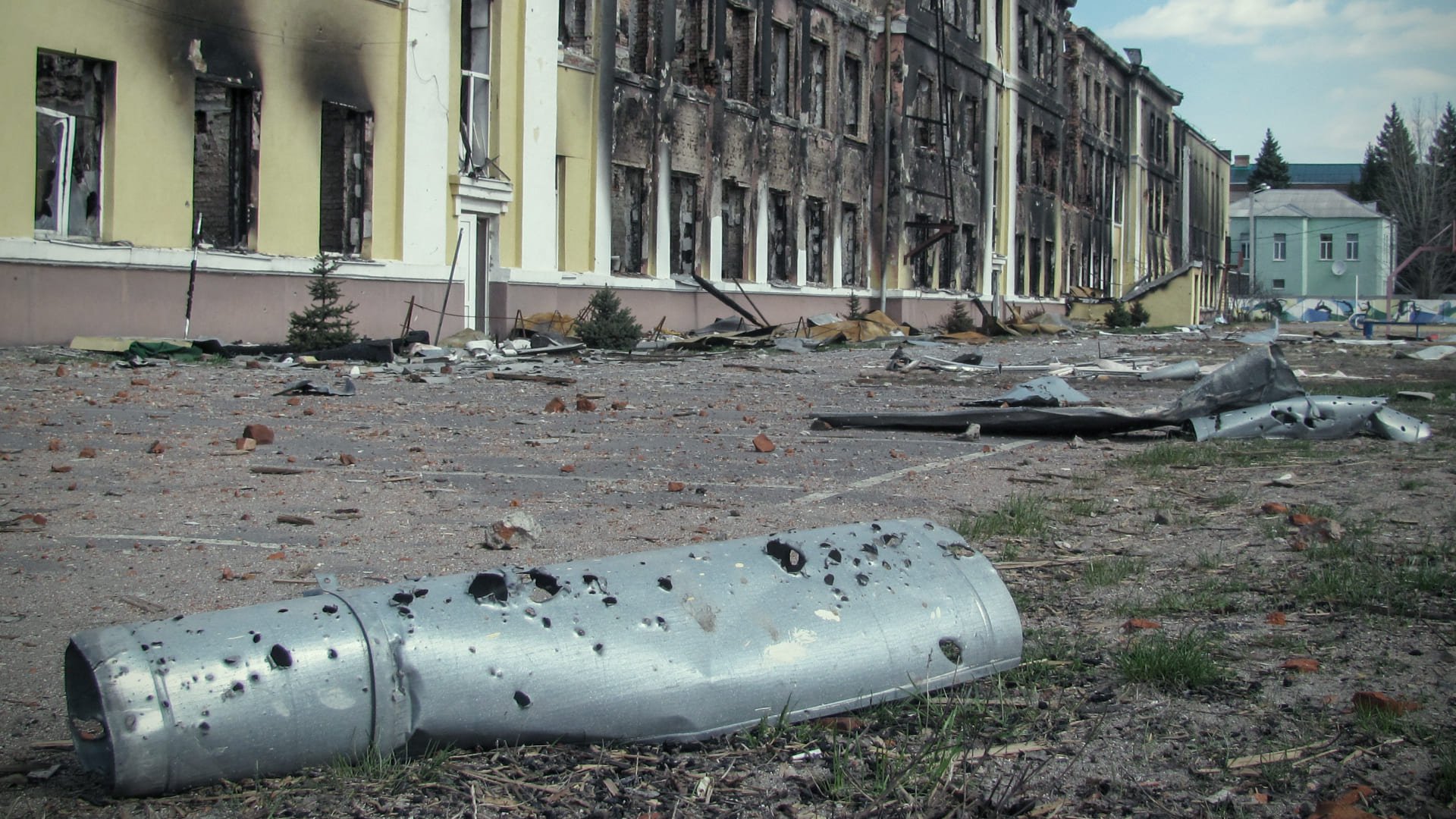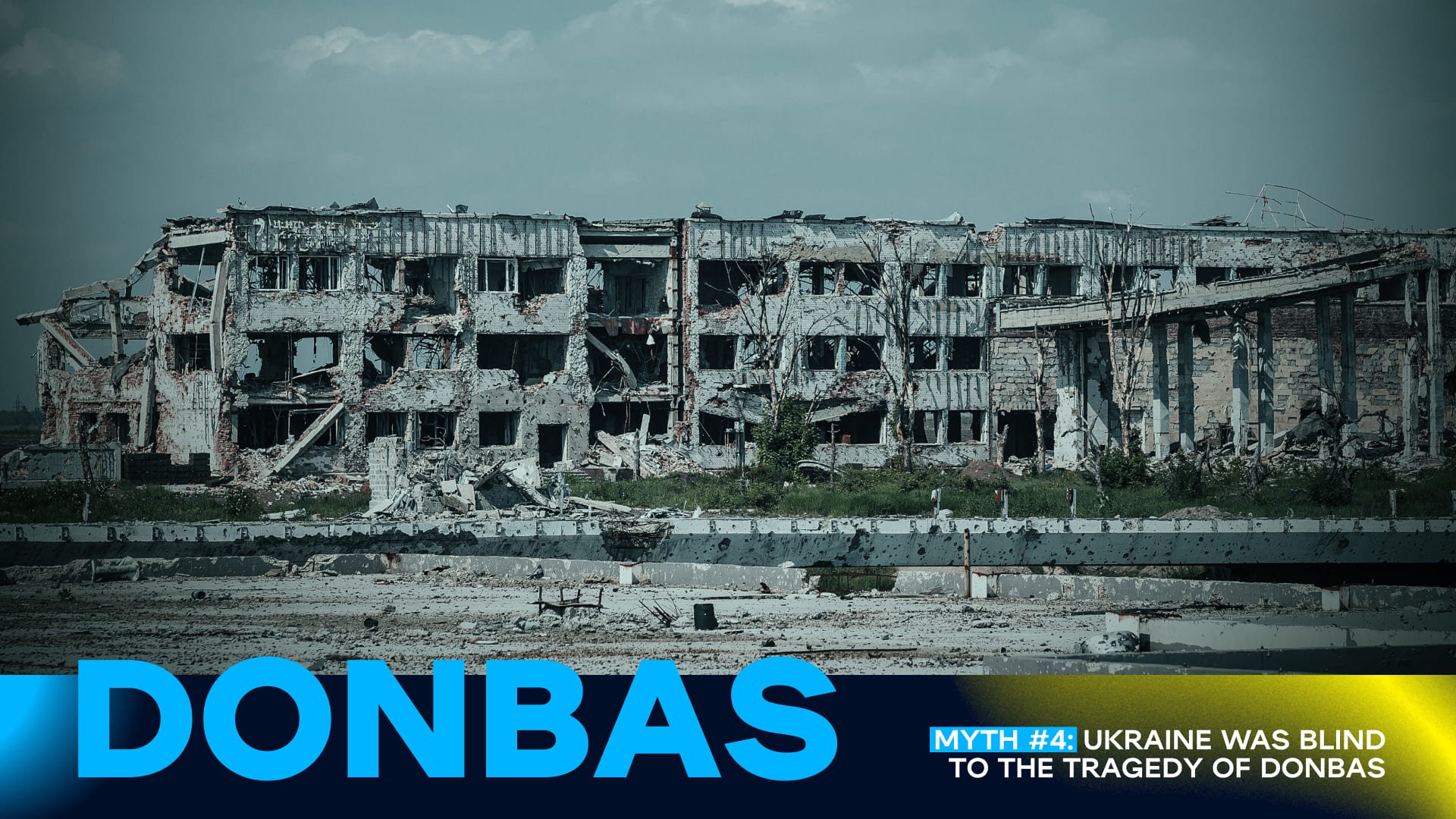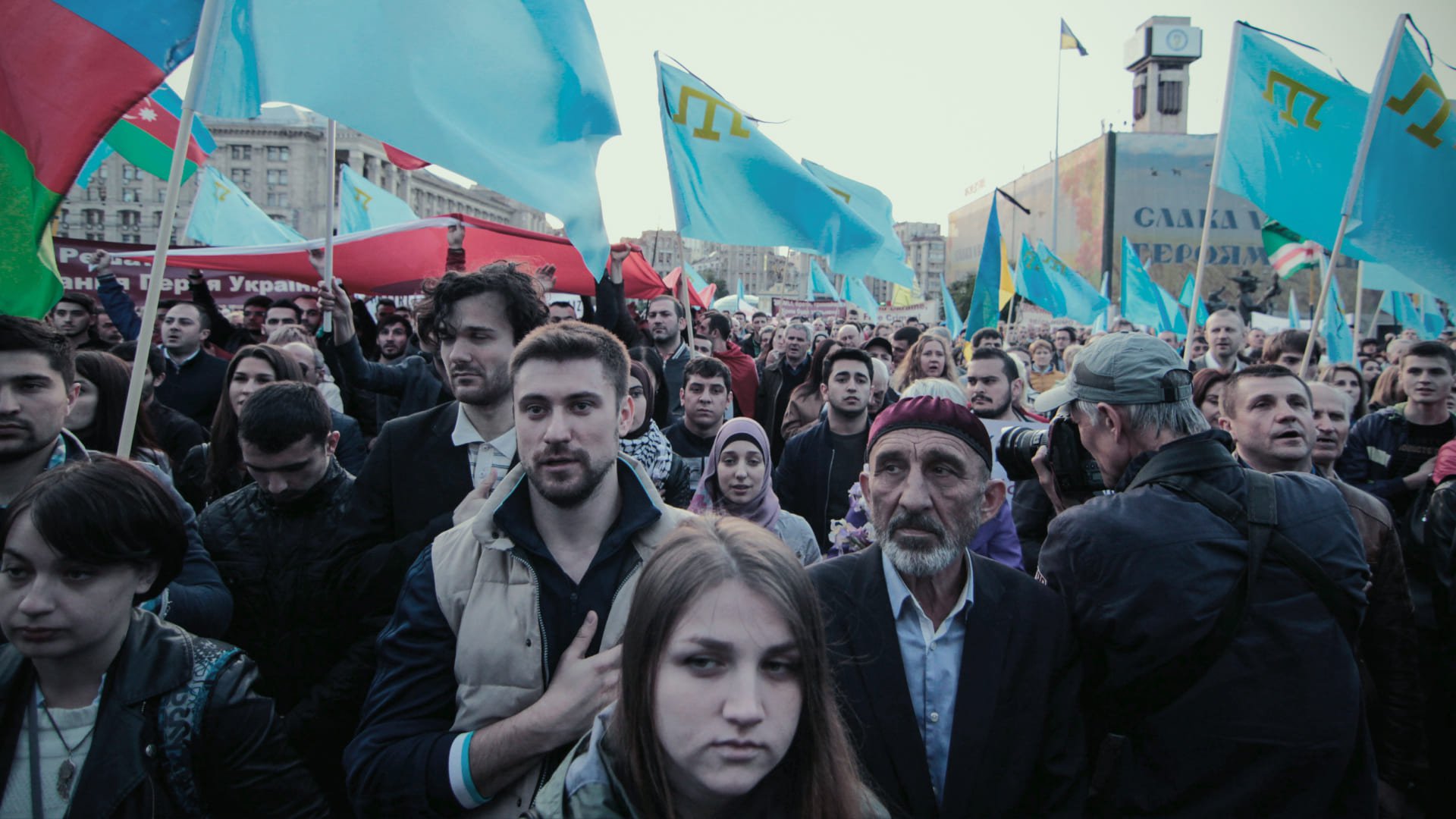April 29, 2022
Five myths of russian propaganda about Ukraine
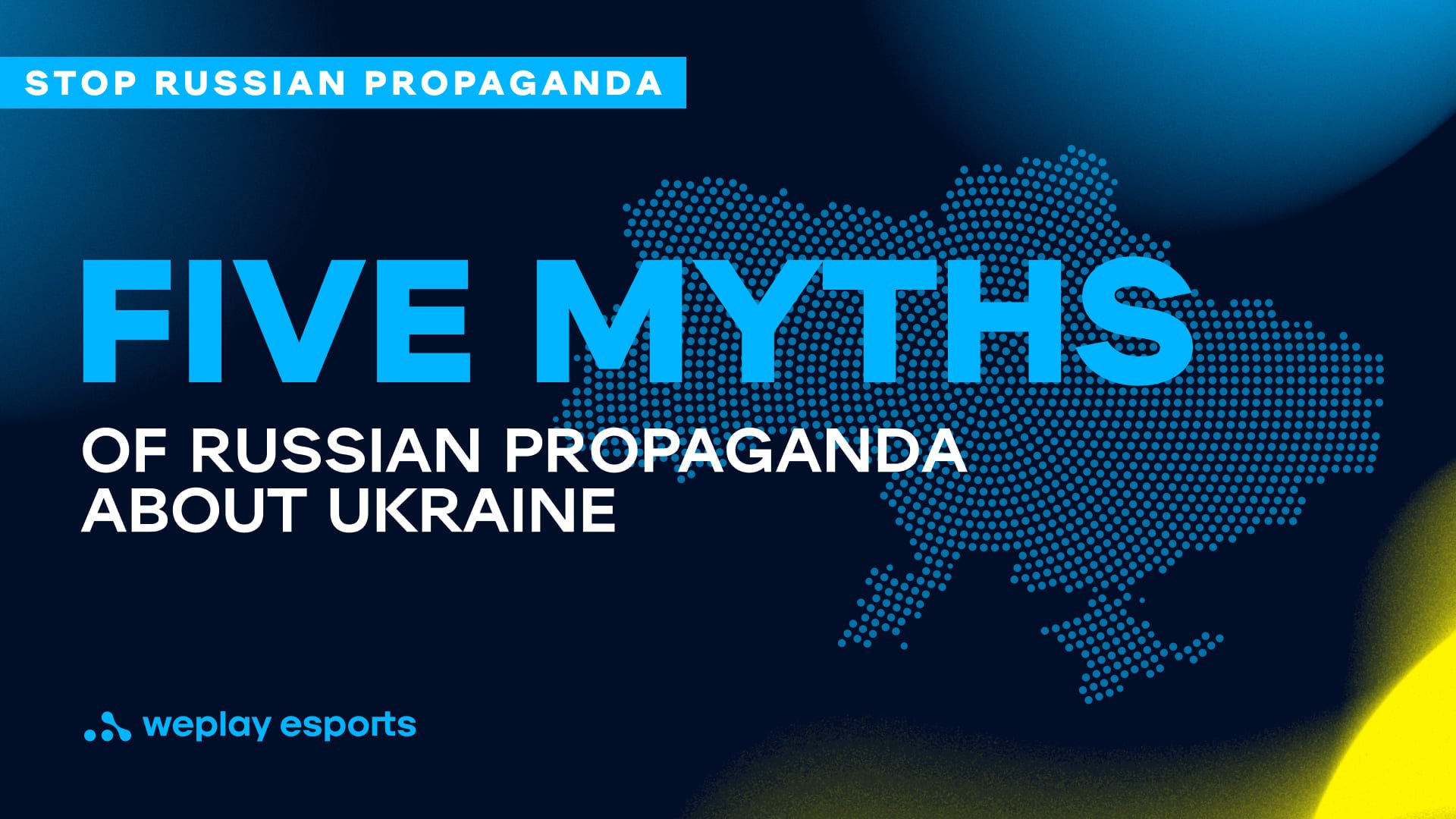
18 min read
Over two months ago, russia started a war. However, the russian propaganda machine has been setting the stage for this war for much longer.
According to a VCIOM (russian Public Opinion Research Center) survey, 71% of respondents in russia support the war in Ukraine. Whether one should trust an information source of the aggressor country is a question that everyone must answer for themselves. Though even from personal experience, many Ukrainians, including the representatives of WePlay Holding, who communicate with their relatives and friends from russia, hear the exact cliché phrases: “It’s a special operation, not war” or “russia doesn’t target civilians,” and, of course, “Stay calm and wait a bit until russia saves your country from far-right nationalists.”
To stop propaganda from spreading, everyone should know the truth. So, here we aim to dispel the most popular myths about Ukrainian cities by contrasting them against historical facts and with the help of the Ukrainians who were born and raised in these cities.
Myth 1. Kyiv is the capital of fascism
According to russian media, Kyiv is a victim of the nationalist and fascist authorities. Let’s go straight to the point. The Merriam-Webster dictionary states that fascism is an ideology of dictatorship and centralized autocratic government. Different dictionaries also mentioned fascism as a repressive regime based on racism, anti-Semitism, and chauvinism that aims to suppress progressive social movements, destroy democracy, and unleash wars.
russian propaganda pictures Ukrainians as victims suffering under a totalitarian elite. In fact, democracy characterizes the country better than any other word. Ukrainians value their right to freedom of speech: anyone can participate in one-person protests, parades, and peaceful demonstrations. Euromaidan of 2014 alone showcased Ukraine as a democratic state. Ukrainians may disagree on many things, but they are united in one thing: Ukraine is a homeland to stand for. In short, Ukrainians support Ukraine, not the idea of any one leader.
Continuing to impose an anti-Ukrainian perspective, biased media claim that chauvinists have made their way to the very top of government structures. By chauvinists, the media usually mean the national liberation movement with Ukrainian nationalism ideology, like the Right Sector (Pravyi Sector). However, even the assertion that the nationalists are running the country while being supported by the majority is fundamentally wrong. During the parliamentary elections of 2019, several nationalist parties, including the Right Sector, the Organization of Ukrainian Nationalists (Orhanizatsiya Ukrayins’kykh Natsionalistiv), and the National Corps (Natsionalnyi korpus), decided to unite, but that didn’t help much. The newly created party got only 2.15% of votes and didn’t even pass the threshold for further participation in the elections.
“If a russian says that they love their country, they are patriots. If a Ukrainian confers their state with the same dignity, they are a nationalist. A russian can call a Ukrainian a Khokhol, because it’s a joke, but a Ukrainian cannot say ‘Moskal,’ because it’s russophobia. You can shout ‘Forward, russia,’ but when a Ukrainian says ‘Glory to Ukraine,’ they call us Nazis. When the presidents of russia and the U.S. communicate, they are establishing international relations. Our President is ‘plotting’ something against russia when conferring with his American counterpart. You can speak russian in russia, but speaking Ukrainian in Ukraine means oppressing the russian language,” explains the policy of double standards Oleksii “уХо” Maletskyi, media talent.
To boost the development of Ukrainian culture, the government issued a single Law of Ukraine “On ensuring the functioning of the Ukrainian language as the state language”, or the so-called “language law”, according to which documentation, concerts, performances, and theater productions should be held in Ukrainian. For instance, television and radio channels only broadcast part of their content in Ukrainian — 75% and 35%, respectively. This means there is still room for any foreign content. Still, the fact that the citizens of Ukraine are allowed to be creative in their native language causes indignation among the invaders.
” At school, I studied Ukrainian regularly and russian until fourth grade. In everyday life, my friends and I communicated in russian. Some spoke Ukrainian, and others used a mix of the two. No one minded; the main thing was that we understood each other. I moved to Kyiv in 2015 from the city of Cherkasy, in central Ukraine. I kept communicating in russian with my friends, service staff, and even state institutions, and no one has ever attacked me because of my language. My father and other relatives on his side speak Ukrainian, but they understood me perfectly and never made any comments about it,” remembered his childhood Vladyslav Sabo, live broadcast producer.
Of course, it’s clear that the statement of russian propaganda about fascism in Ukraine is most likely speculation based solely on the status of the russian language on the territory of another country. However, so as not to omit anything, let’s give statistics. There are more than 40 synagogues in Ukraine and about 80 Jewish educational organizations, not to mention the fact that the President of Ukraine Volodymyr Zelensky has Jewish roots. There are more than 160 mosques and prayer houses in Ukraine, most of which are located in Crimea. Plus, there are 90 Muslim Sunday schools and seven religious universities. As in any European country, people in Ukraine have the right to practice their religion. Thus, temples, synagogues, and mosques are open to everyone.
As of 2021, about 76,500 foreigners were studying in Ukraine. Students from India, Morocco, Turkmenistan, Azerbaijan, Nigeria, China, and other countries choose universities in Ukraine. Some of them even settle in this country after graduation.
All Ukrainians are free in their choice of religion, language, political views, and so on. Unfortunately, now, the choice comes down to two options: survive or die from the russian army’s missiles.
Myth 2. Lviv is a center of nationalism
russian propaganda has long been spreading tales depicting Lviv as a city of far-right nationalists. Myths quickly arose one after another. For example, one of the main stories was that a trip to Lviv could be dangerous for russian-speaking tourists because of the nationalists based there. The long-term spread of fiction has led russians to associate the cultural heart of Ukraine primarily with Stepan Bandera’s followers.
To see that russian propaganda is based on nothing but lies, all one has to do is remember Ramzan Kadyrov’s statement that Chechen fighters will soon deal with russia’s main enemy, Stepan Bandera. Stepan Bandera was indeed the leader of the Ukrainian nationalist movement in the western part of Ukraine, but he died as early as 1959. Whether this was another manipulation by Ramzan Kadyrov or mere historical illiteracy, it is impossible to say. However, some russians who blindly trust their authorities believed in the “resurrection” of Stepan Bandera.
For the russian media, it is convenient to describe Lviv as a nationalist city. Besides, when using the term “nationalism”, they most likely rely on the definition of nationalism as an ideology and a policy that puts its own — dominant — nation above all others and tries to oppress other nationalities.
What one should remember about Lviv is that it’s a tourist destination where everything is done for the travelers. It happily welcomes foreigners from different parts of the world. This fact alone already contradicts the picture of Lviv that russia created.
In 2021, despite the pandemic, almost two million foreigners visited it, according to the numbers presented by the Lviv Regional Council. Guests came from Poland, Saudi Arabia, Germany, Belarus, and other countries. The city has sprouted infrastructure that caters to tourists’ desires. Hotel rooms for every budget, plenty of restaurants, some so rich in culture that they alone make it worth visiting the city. In 1998, Lviv Historical Center made the UNESCO World Heritage List. In 2009, Lviv got the title of Ukraine’s culture capital.
Once the war began, the city started welcoming refugees from all over Ukraine. During the first three weeks of the war, Lviv took care of 200,000 internally displaced persons. The city gave food and protection to people regardless of the language they spoke. Lviv has become a haven for all those fleeing from russian violence, which proves once again that there are no nationalists who want to annihilate all things russian. Indeed, the only danger for all Ukrainians in Lviv is shelling by russian soldiers, not fictional nationalists.
Myth 3. Kharkiv is a native russian city
russians labeled Kharkiv a russian city first and foremost, relying on the fact that Kharkiv residents now primarily speak russian. Looking at the data of the first census of the russian Empire’s population (1897), you can see that 80.62% of the inhabitants of the Kharkiv province spoke Ukrainian and, therefore, were classified as Little russians (Malorossy). According to “History of Ukrainian Literary Language” (Kyiv 2001. First edition Winnipeg 1949) by Ivan Ohienko, the term “Malorossy” most likely originated from the Greeks, who distinguished southern and northern Rus’. Southern Rus’, that is, Ukraine, was more familiar to them, so they called it Mikra Rosia, meaning ancient Rus’ — the basic, old one.
The city was Ukrainian-speaking when the russian rulers issued plenty of laws prohibiting all things Ukrainian: teaching the language in folk schools, delivering sermons in Ukrainian, and giving children Ukrainian names at baptism. Even with the advent of the USSR, the city tried to defend the right to use its native language. However, the Stalinist regime went to great lengths to stamp out dissent. Thus, the Ukrainian Spelling Book of 1928, also called the Kharkiv Spelling Book or Skrypnykivka, was already changed in 1933. The Soviet authorities labeled the spelling as nationalistic and decided to bring Ukrainian closer to the russian language. Stalin’s devotees ruthlessly removed even entire letters. For example, they got rid of the letter Ґ (G), declaring that it was “bourgeois nationalist sabotage.”
Now the residents of Kharkiv, Kherson, or other cities in the Ukrainian east and south feel comfortable speaking russian on a daily basis. In the end, the oppression of the Ukrainian language and forced Russification were not without consequences. However, the people who live there self-identify as Ukrainians, proud of their country regardless of the language they use.
Besides changing spelling, 1933 was marked by even more dreary events, the beginning of the Executed Renaissance. The Ukrainian poets and writers were arrested en masse and then executed or repressed. The repressions started with the arrest of Mykhailo Yalovyi in the Kharkiv house of “Slovo” (the Word) and the suicide of Mykola Khvylovy.
By a cruel irony of fate, on March 7, 2022, while russian forces attacked their so-called “native city,” one of their missiles hit the house of “Slovo.” Other russian-speaking cities are suffering from the shelling of the russian army too, although russia has said that it wants to fight specifically for russian-speaking Ukrainians.
“My father is a russian citizen, but he has lived in Kherson for 25 years. He has never suffered any prejudice — neither due to his citizenship nor his language. My father would have enlisted in the defense if he hadn’t broken his arm. Kherson is a russian-speaking city indeed. But, despite this, even now, people take to the streets shouting ‘Kherson is Ukraine,’ and they shout it in russian,” expressed his opinion Dmytro Shylkin, SMM manager.
Myth 4. Ukraine was blind to the Donbas tragedy
In a mockery of the Ukrainian people, russians throw this question, “Where have you been for eight years?” In fact, the evidence, eyewitness accounts, etc., prove that the russian armed forces have been participating in the war in the Donbas for eight years. The international volunteer organization InformNapalm compiled a database of russian military forces who have been in the Donbas between 2014 and 2016. In just two years, volunteers have collected evidence confirming the presence of service members from 75 russian military units.
Remarkably, even the name Donbas is rooted in russian propaganda. Anton Fedyashin, Ph.D., a historian at the American University, explains the term “Donbas” is an acronym meaning “Donets coal basin” The territory of Donbas has never been a separate subnational entity, or province. However, russian media like to use collocations such as “the people of Donbas,” “the choice of Donbas,” and “the voice of Donbas,” thereby separating the region from other regions of Ukraine.
“I was forced to leave my home city of Donetsk in 2014 when the hostilities started. Donetsk and all of Donbas as a region have become the loudest argument in favor of the fact that russian intervention brings nothing but destruction. People with machine guns stormed into my Donetsk, a Ukrainian city, and for the last eight years, they have done everything to destroy it. For me, my family, and friends, it’s obvious that it was russia that unleashed the war in Donbas. The referendum where people “voted” for the “independence” of the Donetsk region is illegitimate,” shares her outrage Tatiana Stronskaya, international PR manager.
The neighboring country has been running this war for eight years. Basically, propaganda makes russians hate Ukrainians using falsifications, or fakes. One of the most high-profile stories on Channel One (Pervyy Kanal) told about the crucified boy. According to Galina Pyshnyak from Slovyansk, the Ukrainian military nailed the boy to a bulletin board. Galina said the execution took place in the city center, in front of the public. However, there are no more witnesses, photos, or videos — nothing apart from her words. Anyway, Channel One released Galina’s story, intensifying the image of Nazi Ukraine for russians.
For some reason, even the discrepancy between words and actions doesn’t undermine the russians’ confidence in Putin. For example, as we already know, Putin denies the presence of his country’s military on the territory of Donbas from 2014. However, in 2015, the former head of the so-called Donetsk People’s Republic, Alexander Borodai, founded the Union of Donbas Volunteers in Moscow. Citizens of russia who took part in the war in the eastern part of Ukraine could join the organization. The approximate number of these military volunteers, according to Alexander Borodai, is about 30,000 to 50,000 individuals.
"I keep in touch with my relatives, friends, and acquaintances who have been living in Donetsk all these eight years. According to their stories, the ’DPR’ is an isolated island on the edge of the earth, a pariah city. You cannot just enter Donetsk or leave it. You have to go through a million checkpoints, present all the documents you have, and convince the military of the purity of your intentions and that the purpose of your visit is harmless. For eight years, there has been a regular curfew from evening until morning. Most of the population has fallen into poverty,” commented Tatiana Stronskaya.
russia claims that it accepts refugees from Ukraine. While more than two million Ukrainians left for Poland, less than 300,000 came to russia. Almost all Ukrainian refugees in russia fled from the so-called “people’s republics” (“LPR” and “DPR”). For eight years, the media have been spreading their favorite narratives about the atrocities of the Ukrainian authorities, the infringement of rights of russian speakers, and the like in these regions.
Invaders declare that their goal is to save and free Ukraine, and the civilian population can live as they lived before. However, the people of Svatove, a city in the region of Lugansk that only fell under the control of the so-called “LPR” in March 2022, can already feel that the “russian peace” is changing the usual way of life beyond recognition.
“I was born and raised in Svatove. Now, my hometown is occupied by the russians. Three times, the citizens tried to stop the soldiers. Unfortunately, the invaders took the city and repressed all further Ukrainians’ attempts to defend their rights. My relatives are still in the city and can watch what russians do there. All Ukrainian flags were torn down and replaced with russian tricolors. Representatives of the ’LPR’ work in the police, military registration and enlistment offices, and government structures.
The newly formed ’government’ banned schools from teaching the Ukrainian language, literature, and history. Russian soldiers are unlawfully seizing people’s cars and the machinery and grain that belong to enterprises. On several occasions, anti-occupation activists got beaten up. There is no money in ATMs, and the invaders have introduced the rouble.” described the realities of the russian occupation Maryna Kryzhnia, PR writer.
Where have Ukrainians been all those eight years? They were defending their land with their lives. What isn’t clear is what russian soldiers have been doing in Ukraine for eight years.
Myth 5. Crimea has always been part of russia
russia argues that Crimea is a part of its historical lands. However, it was only in 1783 that the russian Empress Catherine II signed the Manifesto on the annexation of Crimea by the russian Empire, and in 1954 already, Crimea joined Ukraine. Considering that during three years, Crimea had been occupied by Nazis, it turns out that the peninsula had only belonged to russia for 168 years. In comparison, the peninsula was under the Ottoman Empire’s rule for much longer — about three centuries. From the 13th to the 15th century, the territories of russia were under the control of the Golden Horde. Following this logic, russia should give up most of its land because it belonged to other countries, empires, and so on for centuries. But the good thing about living in the modern world is that country borders are fixed at the international level, and therefore nobody has the right to violently change them.
These facts don’t prevent russia from asserting that Crimea is its territory. Moreover, they describe Crimea becoming part of Ukraine as a generous but short-sighted gift from Khrushchev, who single-handedly decided to give away a piece of the land in 1954. Browsing history, one can learn an interesting fact: after the death of Stalin in 1953, there was no single undisputed ruler in the USSR, and therefore all decisions were taken collectively. For example, the decree about Crimea was signed by Voroshilov and Pegov and was approved by the Presidium of the USSR Supreme Soviet on February 19, 1954, chaired by Malenkov, as stated in the Meeting Minutes.
The decision to transfer Crimea wasn’t about generosity, but economic benefit. After World War II, the peninsula had to be rebuilt. The war destroyed cities such as Kerch and Sevastopol. Moreover, in 1944 Stalin deported the Crimean Tatars (indigenous people of Crimea), Armenians, Greeks, and others from the peninsula’s territory, aggravating the already complex situation in Crimea. In a couple of days, 238,500 people were deported from Crimea — almost the entire Crimean Tatar population. According to various estimates, during the first three years after the resettlement, between 20 and 46% of all deportees died from starvation, exhaustion, and disease. The war and deportation reduced its population by almost three times, making it impossible to restore agriculture. The Soviet authorities passed the buck to Ukraine. However, when Ukraine turned Crimea into a resort center, russia decided to occupy the peninsula.
“russian propaganda flourished in Crimea for as long as I can remember. Here it was common practice to glorify russian culture, talk about ’brotherhood’ with russia, and identify Crimea as part of russia. For example, schools used to teach children in russian: out of 41 schools in Simferopol, only one was Ukrainian. Kids had Ukrainian language and literature lessons only once or twice a week. Some schools didn’t offer them at all. University admission exams were also held in russian. At the same time, it was the region that spoke the most about the oppression of the russian language. Many public organizations were founded and financed by russia, such as the ’russian Community of Crimea’ and other foundations, cultural communities, clubs,” describes the impact of russian propaganda in Crimea Daria Zakhozhenko, marketing&research lead.
The referendum on Crimea’s status organized by russia is illegal and has not been recognized by Ukraine and all of the civilized world. First, the armed military had already seized the parliament building and forced authorities to decide on the “referendum” in Crimea. These troops didn’t even let journalists in. Secondly, the voting questions had manipulative wording. People were offered to join russia or go back to the Crimean Constitution of 1992 (which did not essentially mean the territory would be part of Ukraine). Finally, there were no international observers during the voting. And although the russian authorities say that they didn’t notice any violations, independent journalists and ordinary residents of Crimea claim that anybody could vote — even without a passport.
While russia showcased the occupation of Crimea as a triumph of historical justice and the liberation of Ukrainians, they preferred not to leave Ukrainians on the peninsula. First, russia began to evict the families of Ukrainian service members to settle the military of russia with their families in their apartments. According to the most conservative estimates, from 2014 to 2018, about a million russians were resettled on the peninsula. They didn’t stop there.
Soon, putin signed a decree banning foreigners from owning housing in Crimea. Ukrainians who didn’t want to take russian citizenship lost their properties. Activists and other undesirable individuals fell under repression. The russian government actively used psychological terror, including arrests and systematic house searches. By decision of the russian court, 600 Ukrainians were evicted from Crimea in 2020. All these actions of the russian federation violate international humanitarian and private law.
The web of russian propaganda is certainly confusing, but none of its narratives will stand up to scrutiny. Almost any statement by the russian media turns out to be either a twisted fact or a lie. But why then do people believe? It’s simple. There are no alternative sources of information in russia. Most independent magazines that promote an idea objectionable to the russian authorities get closed or banned. A few media outlets try to resist the pressure from the authorities, but they still avoid Ukraine-related topics, fearing getting caught according to the newly minted “law on fakes”. Absolute censorship prevents people from expressing their opinions freely, forcing people to keep quiet. Overall, by disabling Ukrainian TV channels in the occupied territories, the enemy adheres to their usual time-tested tactics and simply misinforms Ukrainians.
Almost the entire history of Ukrainians’ and russians’ neighborhood boils down to the fact that the former are forced to fight for their right to freedom, native language, and an independent state. In response, Ukrainians faced repressions and arrests, and now also bombs falling on their heads. The truth is the first victim of the war, but Ukrainians are doing their best to prevent this and spread the truth to everyone.
Slava Ukraini!




